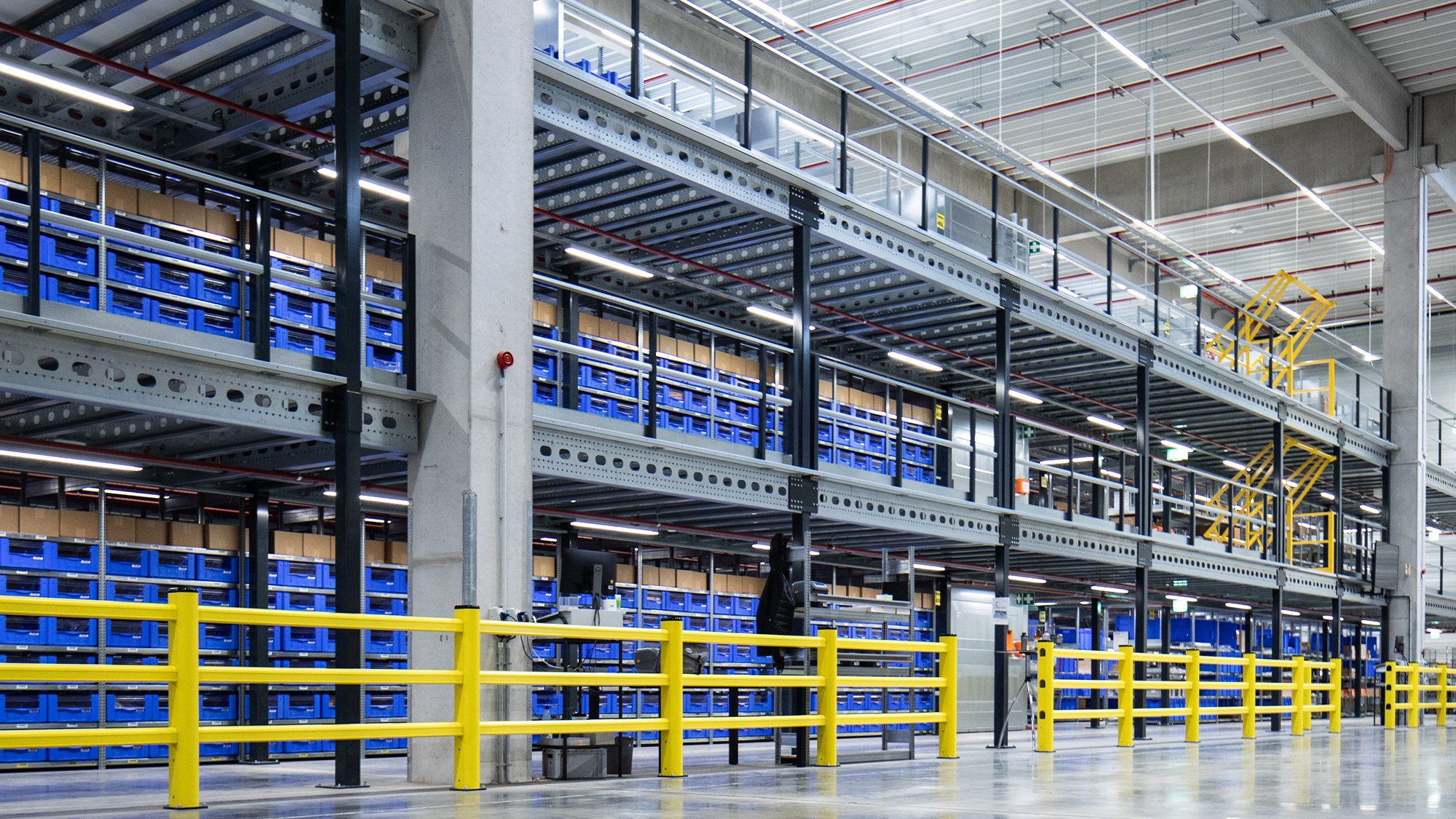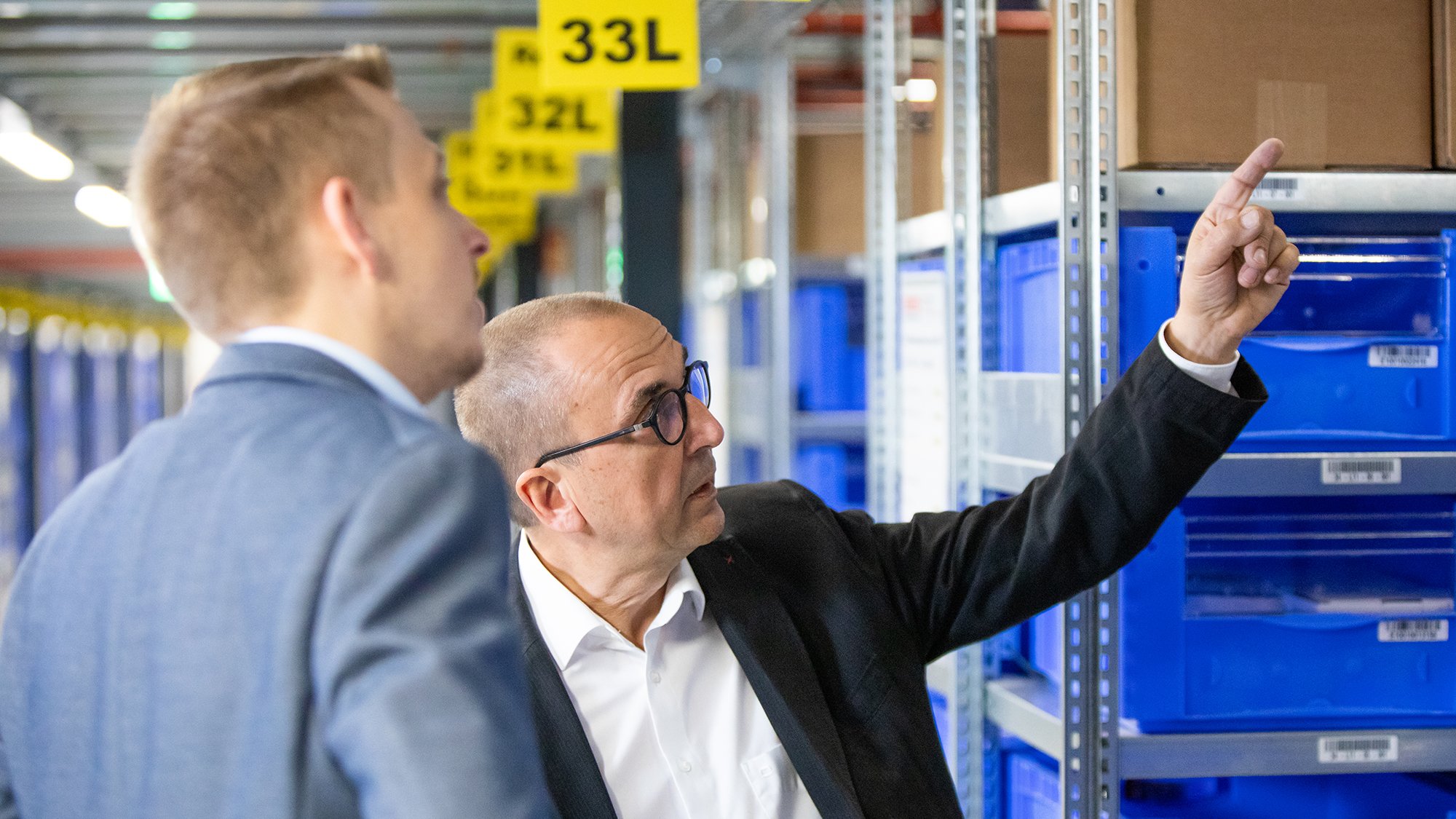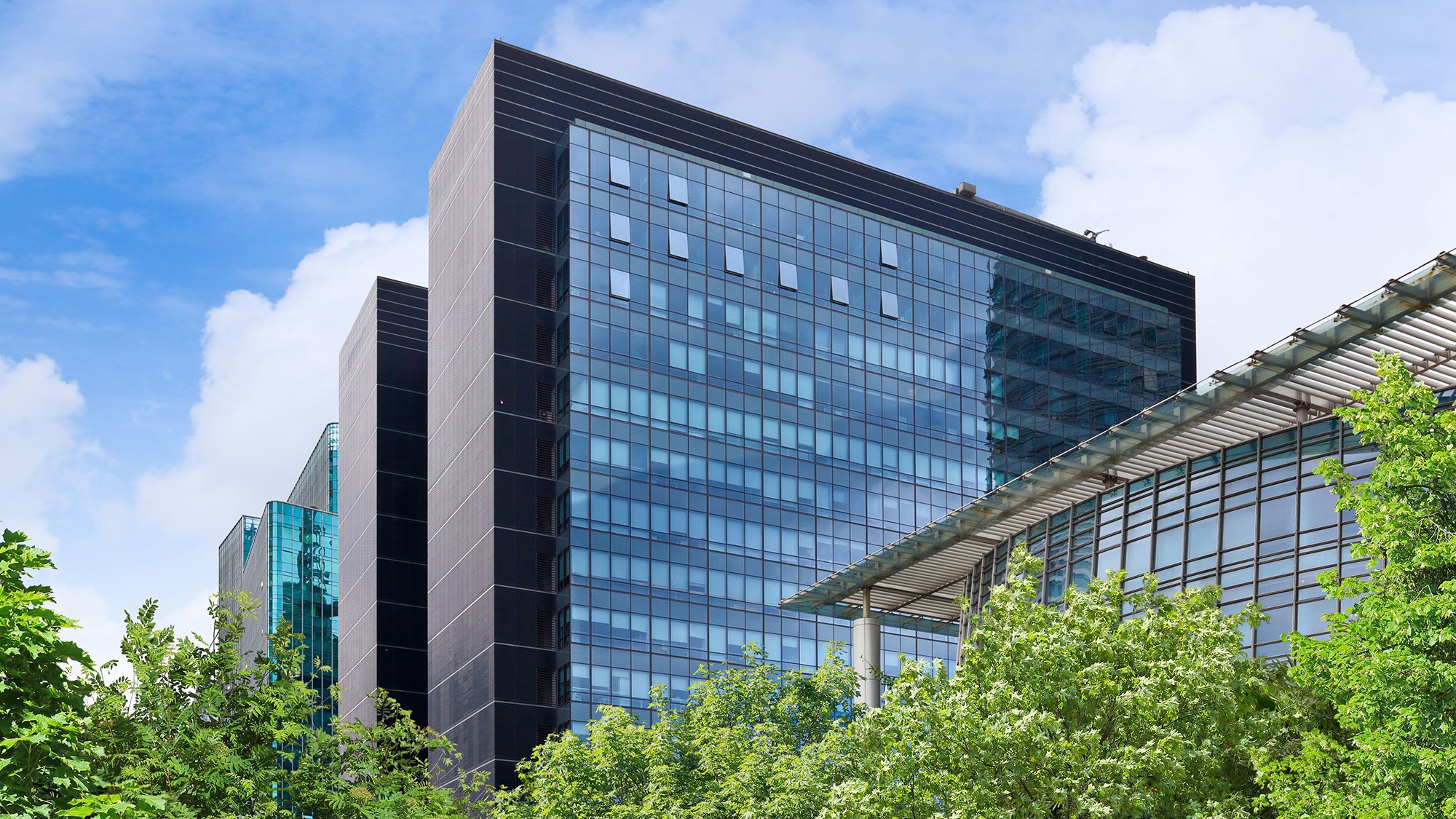Lighting Management for Greater Comfort and Efficiency

In large logistics centers, goods need to be sorted perfectly and stored in a very limited space. For fast order processing without errors, optimal illumination is important in warehouse systems. Because lighting accounts for one of the largest energy consumers in these buildings, an intelligent lighting management system with a professional design is essential. It all comes down to energy-efficient concepts, sophisticated automation programs and reliable hardware.
Fashion and lifestyle products, vehicle and machine replacement parts, electrical components: Large logistics centers contain so-called pick towers for storage of a variety of items of different shapes and sizes with maximum space utilization. These multi-level rack systems are traversable, enable a safe and flexible separation of goods and offer up to 3,500 shelves on multiple levels in a compact structure. Obviously, the lighting conditions need to be optimal.
An Overview of the Project
With intelligent lighting management, our customer KEC-Kretschmer Energie-Consulting ensures reliable and efficient lighting of shelving systems in logistics centers.
KEC relies on the fieldbus-independent WAGO I/O System for the necessary flexibility in connecting and controlling its lights and LED modules.
Finding solutions together: KEC especially appreciates the assistance of WAGO Sales and Application Support.






